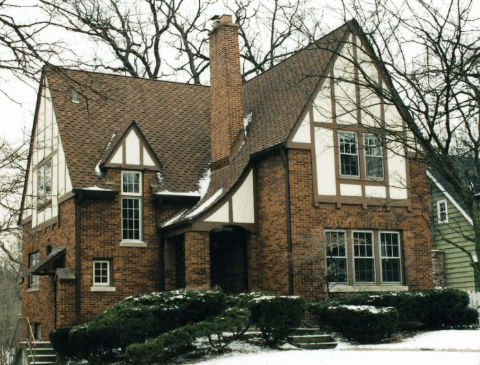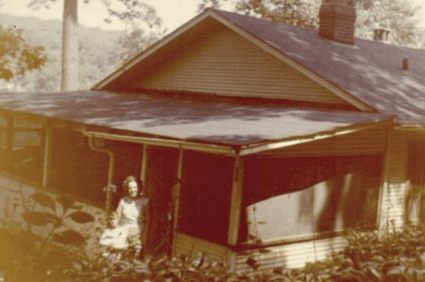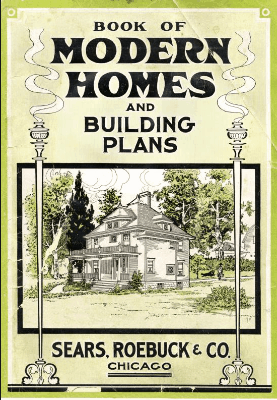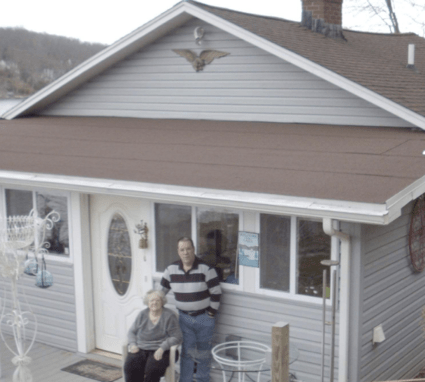
An upcoming presentation in Sandyston, New Jersey, takes a fun and interesting look at the impact that Sears Roebuck had on prefabricated or “kit-homes” as they were called at the time.
The popular homes also, in part, inspired the Chevy Chase neighborhood just outside of Washington, D.C.
“The houses that Sears built — or did they?” takes place on March 19th, and is presented by Jeff Walter, an avid genealogist and local historian. His interest in prefab homes stretches back to childhood memories of his grandparent’s lakefront property.
When his grandparents purchased the lakefront home in 1961, for $8,500, the seller informed them that the 1928 home came from Sears Roebuck.
“It was obvious that everything inside was purchased by a Sears’ enthusiast. The vintage appliances in the kitchen came from Sears, the furnace came from Sears, and everything down to the doorbell came from Sears,” said Walter.
“If Sears didn’t sell it my father didn’t own it. The car battery was a Sears Diehard but, unfortunately, the car was a Rambler. It there ever was a Sears Tourister Automobile my father would have owned one.”

Over time, Walter’s curiosity continued to spark.
“As a genealogist, I decided to apply the same principle to researching our home as I did tracing my family’s roots. I visited the old Hall of Records in Newton and met the then-County Clerk, Honey Ackerman,” said Walter.
“She proceeded to show me how to do a deed search. We started with my parents’ deed from my uncle and then back to the Bauman family. The earlier grantor was a person named Frederick W. Steadman. By coincidence, two weeks later my mother decided to remodel the kitchen. Upon pulling the wide craftsman molding from around the door, there was a discovery. Stenciled on the back of the wood was the name Frederick W. Steadman, Montclair, N.J. Branchville, N.J. Now I knew that not only did I live in Frederick Steadman’s home, but I was also sleeping in his bed. The 1946 deed stated that all furnishing in the home were to remain.”

After this experience, Walter started to spend hours in libraries researching, and photographing different homes looking for answers, but eventually moved on.
Walter returned to the area 15 years later when his father passed away in 2008, to care for his mother. He found that the family home was suffering from years of neglect, and he instructed the contractor to take the house apart.
That’s when the true identity of their home was discovered.
“When the old window casings were taken out, the bottom was marked: ‘Summer Cottage 305.’ Next the wall came out and the interior of the siding was marked ‘Gordon-Van Tine Co., Davenport, Iowa,’” said Walter.
“That’s how we learned that our lake front cottage was not a Sears. A catalogue of Gordon-Van-Tine homes in the 1920s revealed a summer home number 305 that showed an exact floor plan of our home.”

Walter kept digging, and his research revealed that this company was one of the first to sell pre-cut or kit homes. Their roots go back to about 1865 in Davenport, Iowa. By 1923, they offered 150 different homes, and stayed in business until 1940.
When he looked into Sears Roebuck further, Walter discovered that they started selling building supplies in 1895 and, after 1900, they began selling house designs. The first Sears Modern Homes catalog appeared in 1908, offering all the parts needed to build a house.
“Then, from 1916-1933, Sears offered completely prefabricated homes throughout the country. From 1911-1933, they offered mortgage loans, while from 1929-1934, Sears offered actual house construction by contracting with local carpenters,” said Walter.
“Over the years, Sears sold an estimated 100,000 prefabricated homes. Unfortunately, all good things must come to an end and the 1929 ‘crash’ that led to the Depression, and the unpaid home mortgages led to the end of the Sears Roebuck’s prefabricated homes.”
Walter says that of all the “kit homes” in existence, the Sears Roebuck ones are the hardest to identify. In addition to houses, their catalogues offered garages, barns, schools, churches and even outhouses.
When providing more details on the effects of the stock market crash on the industry, Walter shows the domino effect.
“The stock market crash on Oct. 29, 1929, brought on the Great Depression and the beginning of the end of the Kit-Home era. Montgomery Ward closed its housing division in 1931. In the spring of 1933, Sears Roebuck closed its Modern Homes Division, after suffering a loss of more than $8 million in uncollectible mortgages,” said Walter.
“They reopened that autumn with fewer designs and no mortgage financing. Their sales never rebounded and they closed permanently in 1940.” ##
(Image credits are as shown above.)

Submitted by RC Williams to the Daily Business News for MHProNews.

























